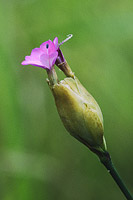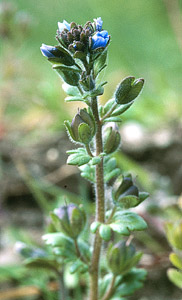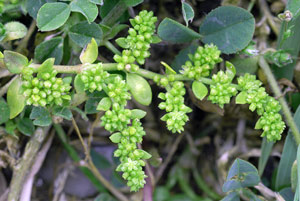 |
Situated in the south-west of the county and extending into adjacent parts of Suffolk, the combination of climate and geology have created a very special area indeed. Breckland is said to be the most ‘Continental’ area in Britain, with high summer temperatures, low rainfall and frequent frosts. The chalk lies close to the surface here but is covered by a shallow layer of sands. The effect of frosts over the millenia has produced an intricate pattern,with patches of calcium-rich soils interspersed by acidic conditions. Proliferous Pink |
Until relatively recently this patterning was reflected in a complex mosaic of short, rabbit-cropped vegetation types. Breckland has changed a good deal over the last 80 years, however, with forestry and more latterly farming taking their toll, and the special plants have suffered accordingly. Most now confined to nature reserves, roadside verges and the ‘Battle Area’. Breckland’s specialities include no less that 13 Red Data Book species, a reflection of just how special the area is. Many of these are rather hard to find, however; easier are some of the ‘Nationally Scarce’ species, such as Bur and Sickle Medicks and Sand Catchfly. Breckland Speedwell |
 |
Smooth Rupturewort - A Red Data Book species almost confined to Breckland, but quite common there on some tracks and rides. |
 |
As well as its flowers, Breckland is famous for its birds. The Norfolk Wildlife Trusts reserve at Weeting heath is the place so see the strange, bug-eyed Stone-curlew. There are good populations of Wood Lark and its wistful, yodelling song of one of the characteristic sounds of early spring and later in the season the churring of Nightjars can be heard at many sites as the sun sets. The serried ranks of conifers that cover so much of Breckland have few fans, but they have brought Common Crossbills and Goshawks to the area, although both can be elusive. Shepherd's Cress |
|



